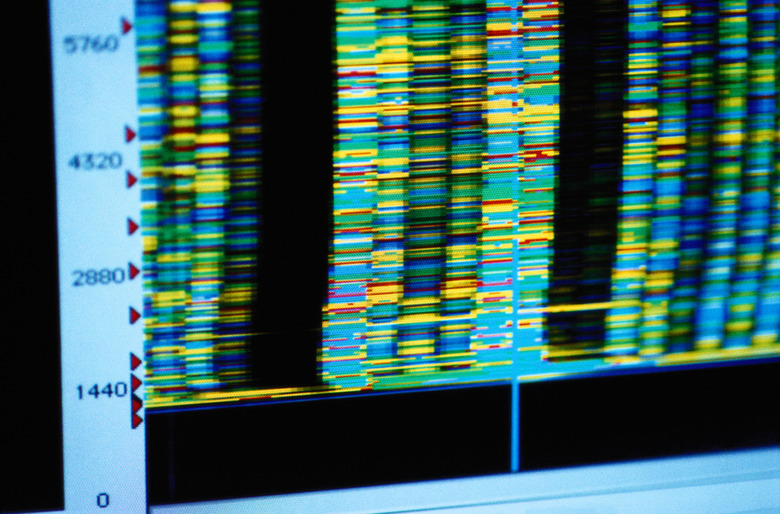What Does The Body Use Nucleic Acids For?
There are many different roles that nucleic acids, which include DNA and RNA, play in the human body and in other living organisms. Scientists continue to identify new and different functions of nucleic acids on a regular basis. The most common functions, however, relate to the encoding of genetic information and production of proteins.
Encoding Information
Encoding Information
Perhaps the most familiar function of a nucleic acid in the body is that of DNA, or deoxyribonucleic acid. DNA contains the genetic code, which consists of the sum of all information a cell or organism requires to perform its functions. Your cells, for instance, have a central nucleus that contains your DNA. Based upon the information contained in the DNA, the cell can produce structural and functional proteins that allow it to function, explain Drs. Reginald Garrett and Charles Grisham in their book "Biochemistry."
Transferring Information
Transferring Information
To make a structural or functional protein, a cell needs to get genetic information from DNA out of the nucleus and into the rest of the cell, where the protein-producing machinery is located. Nucleic acids called mRNA, for messenger ribonucleic acid, form in the nucleus. They copy information from the DNA, and then leave the nucleus. Out in the cytoplasm, or liquid medium of the cell, the mRNA serves as a working template of genetic information for the protein-producing machinery.
Reading Templates
Reading Templates
Another kind of RNA, rRNA, forms a portion of a cellular organelle called the ribosome. A ribosome is a bit of cellular machinery that actually reads mRNA and generates protein, explains Dr. Lauralee Sherwood in her book "Human Physiology." The lowercase "r" in rRNA stands for "ribosomal." Once mRNA leaves the nucleus, ribosomes–made up of rRNA and protein–bind to the mRNA and begin to read the template.
Fetching Amino Acids
Fetching Amino Acids
Protein production requires one more type of nucleic acid: tRNA. Short for "transfer RNA," these nucleic acids work with rRNA to generate proteins from mRNA templates. Proteins consist of long chains of building blocks called amino acids. As rRNA reads mRNA, the rRNA builds proteins by putting together amino acids in the correct order. The tRNA helps out by fetching the appropriate amino acids and bringing them to the ribosome for assembly into a protein.
References
- "Biochemistry"; Reginald Garrett, Ph.D. and Charles Grisham, Ph.D.; 2007
- "Human Physiology"; Lauralee Sherwood, Ph.D.; 2004
Cite This Article
MLA
Hendrickson, Kirstin. "What Does The Body Use Nucleic Acids For?" sciencing.com, https://www.sciencing.com/what-does-the-body-use-nucleic-acids-for-6840008/. 27 November 2018.
APA
Hendrickson, Kirstin. (2018, November 27). What Does The Body Use Nucleic Acids For?. sciencing.com. Retrieved from https://www.sciencing.com/what-does-the-body-use-nucleic-acids-for-6840008/
Chicago
Hendrickson, Kirstin. What Does The Body Use Nucleic Acids For? last modified August 30, 2022. https://www.sciencing.com/what-does-the-body-use-nucleic-acids-for-6840008/
